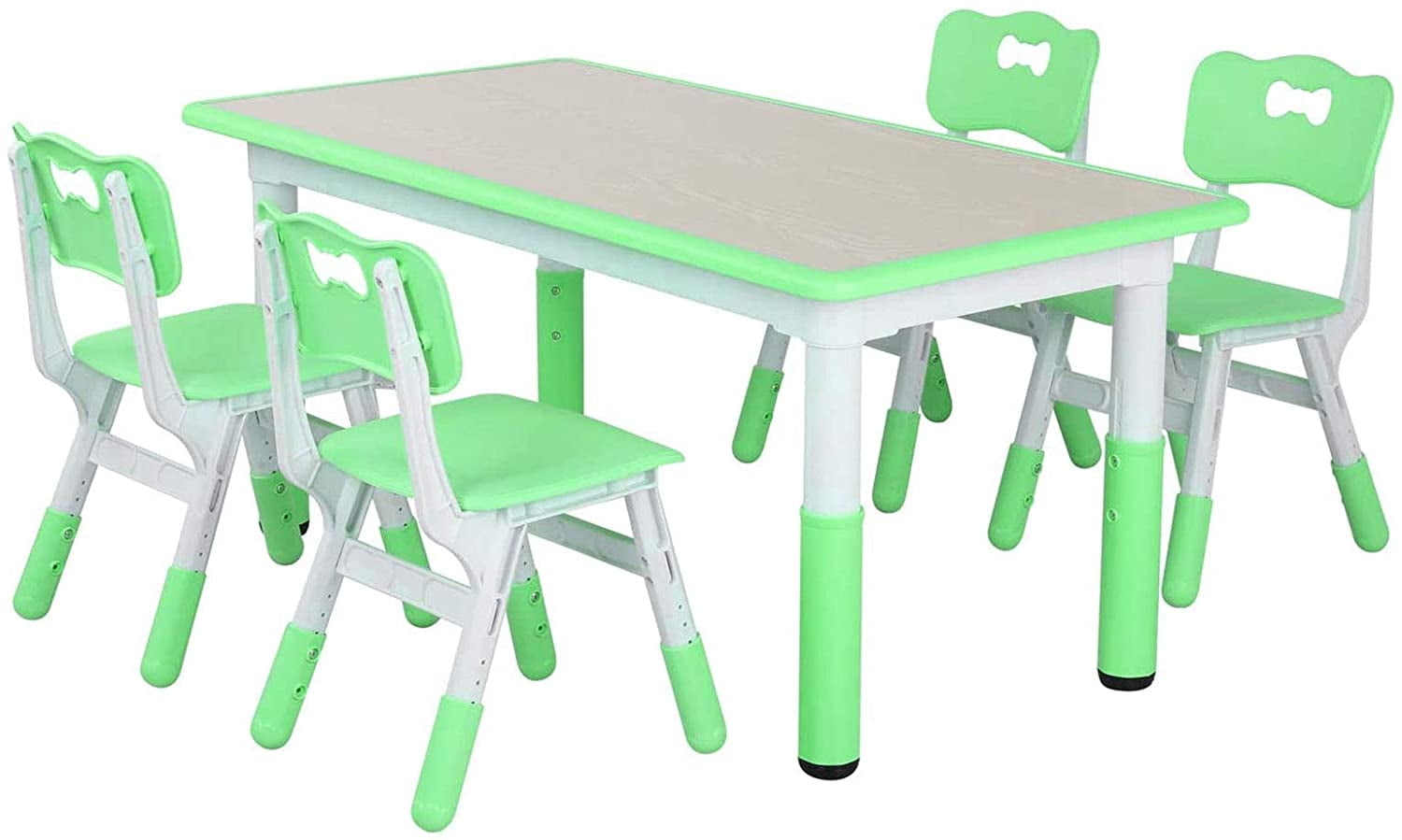Product Overview and Features: Childrens Plastic Desk And Chair Set

Children’s plastic desk and chair sets are designed to provide young children with a dedicated space for learning, playing, and creative activities. These sets offer a scaled-down version of adult furniture, promoting independence and fostering a sense of ownership over their workspace. The features and materials used vary considerably across different brands and price points.
Size Variations, Color Options, and Design Elements
Children’s plastic desk and chair sets are typically available in a range of sizes to accommodate children of different ages and heights. Smaller sets are suitable for preschoolers and toddlers, while larger sets cater to older elementary-aged children. Color options are abundant, often featuring bright, vibrant hues to appeal to children’s preferences. Common design elements include rounded edges for safety, ergonomic seating for comfort, and sometimes integrated storage compartments or drawers for supplies. Some sets may incorporate playful themes, such as cartoon characters or animals, to enhance their appeal.
Materials and Durability
The most common material used in the construction of these sets is plastic. However, the type of plastic significantly impacts the set’s durability and longevity. High-density polyethylene (HDPE) is a popular choice due to its strength, resistance to impact, and ease of cleaning. Lower-grade plastics may be more susceptible to cracking or breaking under stress. The thickness of the plastic is also a crucial factor; thicker plastic generally translates to greater durability. Some manufacturers may use reinforced plastic or incorporate metal components for added strength and stability. Sets made from higher-quality materials will typically withstand more wear and tear and last longer.
Comparison of Popular Brands
The following table compares three popular brands of children’s plastic desk and chair sets, highlighting key features and price points. Note that prices can fluctuate based on retailer and sales.
| Brand | Price (USD) | Key Features | Material |
|---|---|---|---|
| Brand A | $50 – $75 | Adjustable height, storage drawer, bright colors, rounded edges | HDPE plastic |
| Brand B | $30 – $50 | Lightweight, easy to assemble, multiple color options | Polyethylene plastic |
| Brand C | $75 – $100 | Durable construction, ergonomic design, themed designs available, larger size | Reinforced HDPE plastic |
Purchasing and Usage Advice

Selecting the appropriate children’s desk and chair set requires careful consideration of several factors to ensure both comfort and healthy development. A poorly fitting set can lead to poor posture, discomfort, and even physical strain. This section offers guidance on choosing the right size, maintaining the set, and promoting proper ergonomics.
Desk and Chair Size Selection for Children
Proper sizing is crucial for a child’s comfort and posture. Children grow rapidly, so regular assessment of the desk and chair’s suitability is necessary. A general guideline involves considering the child’s height and age. For younger children (preschool to early elementary), a smaller desk and chair set with adjustable features is ideal. As children progress through elementary and middle school, a larger, more adjustable set allows for continued growth and accommodates varying task requirements. It is recommended to measure the child’s height and compare it to the manufacturer’s size specifications. For instance, a child who is 4 feet tall would likely require a different size set than a child who is 5 feet tall. Consider sets with adjustable chair height and desk surface height to ensure a proper fit as the child grows.
Maintaining and Cleaning Plastic Desk and Chair Sets, Childrens plastic desk and chair set
Regular cleaning and maintenance extend the lifespan and hygiene of a plastic desk and chair set. Plastic surfaces are relatively easy to clean, but consistent care is essential. Daily wiping with a damp cloth and mild detergent can remove crumbs and spills. Avoid harsh chemicals and abrasive cleaners that can scratch or damage the plastic. For more stubborn stains, a mixture of baking soda and water can be effective. Periodically inspect the set for any cracks or damage. Minor scratches can often be buffed out with a soft cloth. However, significant damage may require repair or replacement. Regularly inspect the chair’s stability, ensuring all screws and bolts are tightened. A well-maintained set will provide years of reliable use.
Ergonomics and Proper Posture for Children
Promoting good posture while using a desk and chair is vital for a child’s physical development. Proper ergonomics reduces strain on the back, neck, and eyes. The chair should support the child’s back, with their feet flat on the floor or a footrest. The desk height should allow the child to work with their elbows at a 90-degree angle and their wrists straight. Encourage frequent breaks to stretch and move around. Regularly assess the child’s posture and make adjustments to the chair and desk height as needed. For example, if the child is slouching, raising the chair or lowering the desk may be necessary. Encouraging regular physical activity outside of desk work further promotes good posture and overall health.
Revised “Top 5 Children’s Plastic Desk and Chair Sets”
Instead of listing the top 5 sets as a numbered list, let’s consider a comparative approach. We’ll focus on key features and suitability for different age groups. For example, the “KidKraft Presley Kids Desk and Chair Set” is well-suited for younger children, featuring a charming design and sturdy construction. Its compact size makes it suitable for smaller spaces. In contrast, the “Flash Furniture Nicholas Kids Desk and Chair Set” is designed for older children and teenagers, boasting a larger work surface and a more ergonomic chair design. Other sets to consider would emphasize features like adjustable heights, storage solutions, and material durability. The ideal set will depend on individual needs and preferences, balancing functionality, comfort, and durability. A parent should prioritize features that best meet their child’s age, size, and learning style.
